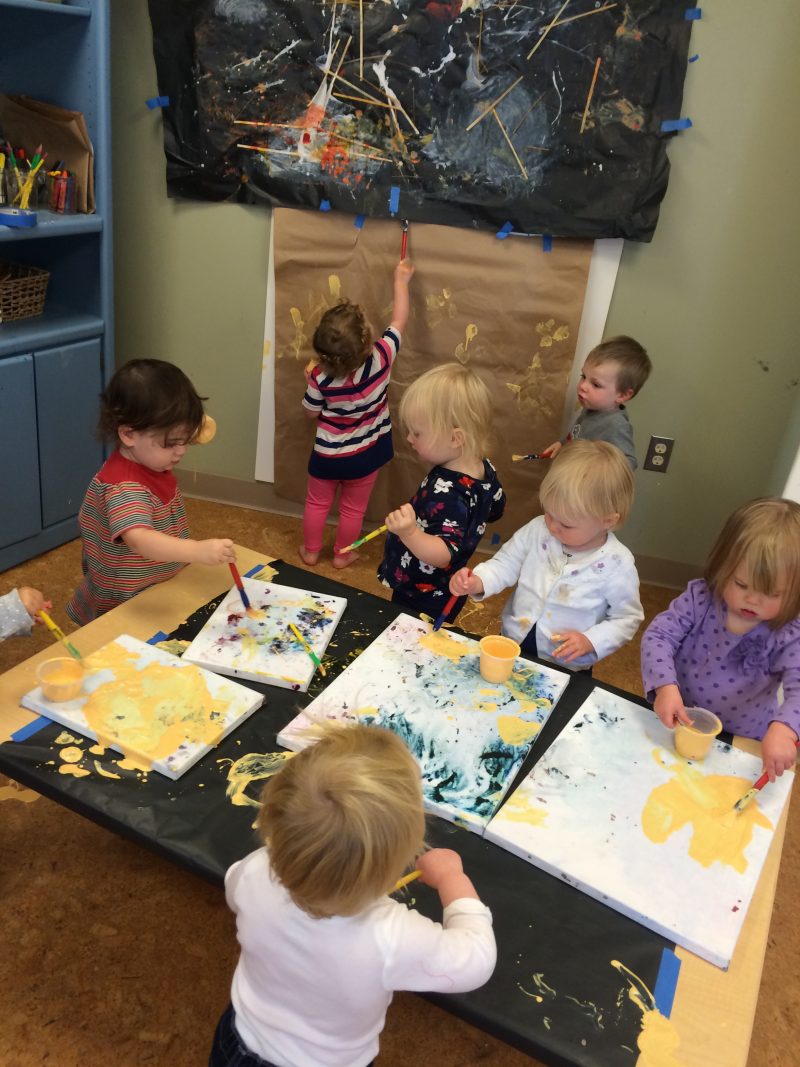There’s glue all over the table, water color spilling to the floor, crayons lost amongst it all. One child is squeezing all of the paint out of the bottle while another is making lines up and down her arms with a green marker. It’s about 10 am in the toddler room at The Nest. Our dedicated art time would almost look like a free-for-all to an outsider but we teachers see serious work happening.
Believe it or not, this madness was my goal. It took a few years and lots of mental, emotional, and physical work on my end to get to this imperfectly orchestrated chaos that we call an art experience.
When I first joined Alphabet Academy I couldn’t wait to share my creativity with the children. What I needed to learn was how to share it with them. I needed to learn how to teach art. I was introduced to a few concepts of how to go about it in the toddler room. We all know children are capable of creating a big, brown mess when they mix a little too much together so I learned how to mix up new paint colors and pair them to compliment each other. I learned how to offer a new piece of paper when I saw something really cool happen so that we could display it before it got messy. As teachers, we sat down weekly and carefully planned each project for the children. We chose materials we thought the children would be interested in, in a color scheme that we believed would be attractive on the walls of our classroom. The children would manipulate the materials for the sensory experience and we proudly hung these masterpieces on the wall.
But I kept feeling that something seemed to be missing from our experience. The children were almost passively involved and it became more and more apparent to me as I watched them in other areas of the classroom. It became so important to me to change my process but I wasn’t quite sure how.
During the school year, my co-teacher and I toured other Reggio inspired schools in our area and we were so excited to see some inspiration for more challenging and interesting experiences for the children in our classroom. Sadly, each time we entered the toddler room of each school, we were hit with disappointment. The preschool and pre-k classrooms were full of interesting objects, there were clearly defined ateliers (Reggio-style art studios), and you could envision the children working hard in the space. The Twos classrooms were usually full of dramatic playscapes that made us adults want to run in and pretend to be a million things at once. But the toddler rooms were often tiny, some of them dark, and very plain. Not many things were accessible to the children. There was a theme of one central table where everything happened and teachers always decided what and when. It made me feel sad and frustrated as it seemed like the children in these classroom simply weren’t trusted to know how they wanted to work for the day. I walked away absolutely determined to change the way toddlers were viewed.
When I transitioned into our new school, The Nest, I shared my thoughts and concerns with my co-teacher. Here we were, in a new classroom; we had a blank canvas. After a couple of months of trying to tweak the previous process, we decided to do away with it all together.
We started with a shelf. We emptied our the toys and loaded it with small jars of paint, pens and pencils, brushes, paper, cardboard, and whatever else the children were requesting at that time. We explained to the children that it was the “free art shelf” and it was open all the time. The children would gather materials of their own choosing and bring them to the table. They would work for however long they needed to and would clean up afterwards. It was amazing to watch. They were completely independent and in control. I shared our experiences with our executive director, Amy, and with her help, we made it full scale.
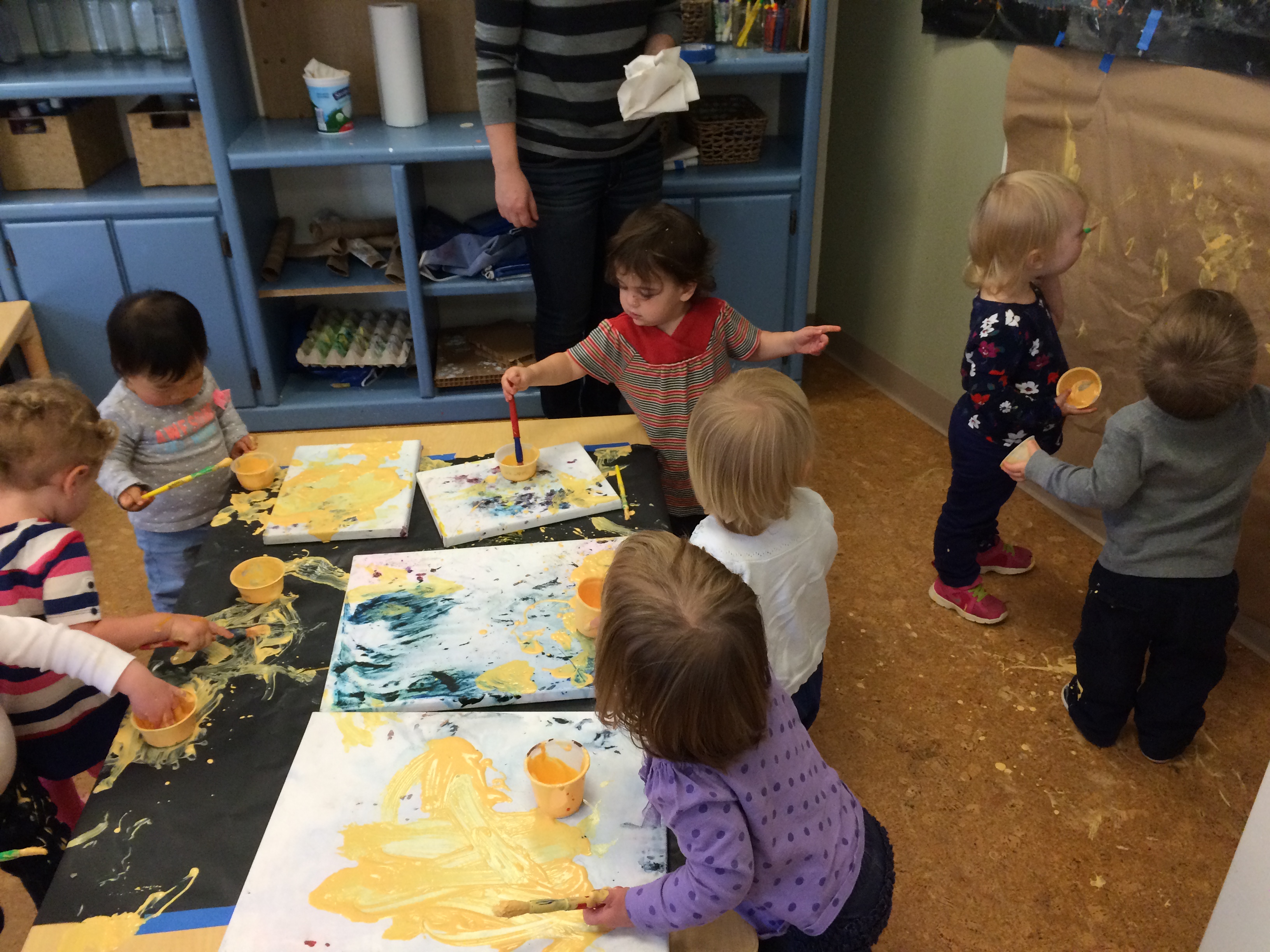
For $50 Amy found an old entertainment center and transformed it into our Art Atelier. We stocked it with whatever found objects we could get our hands on. We designated the lower shelves as the free space from where the children could pick their own materials. These were things they were familiar with and had mastered. Anything above that shelf would still be available but they would need to ask for a teachers help.
This year most of the children seemed ready to jump into art but because it was the beginning of the year, we thought most of them wouldn’t be ready for free art. We carefully selected materials in colors that we thought would look good together. Most of the children had a satisfying sensory experience but it was clear that their enthusiasm and excitement weren’t quite where we thought it would be. It seemed like their hearts just weren’t in it. One child in particular began to refuse art. No, he didn’t want to hold the paintbrush. No, he didn’t want to paint with his fingers. No, he didn’t want to sit at the table. Again, I had to take a step back and think about what was really going on. When they were in our infant room, this group of children had so much autonomy and control over what happened to them. Here, in our classroom, we were sitting them down and telling them when to paint, what colors to use, and what to paint with. I was doing all of the things I said I wouldn’t do! I was doing it because I thought they were just a bit too young. It was a punishing realization to see that I was still thinking of them as babies that couldn’t make acceptable choices.
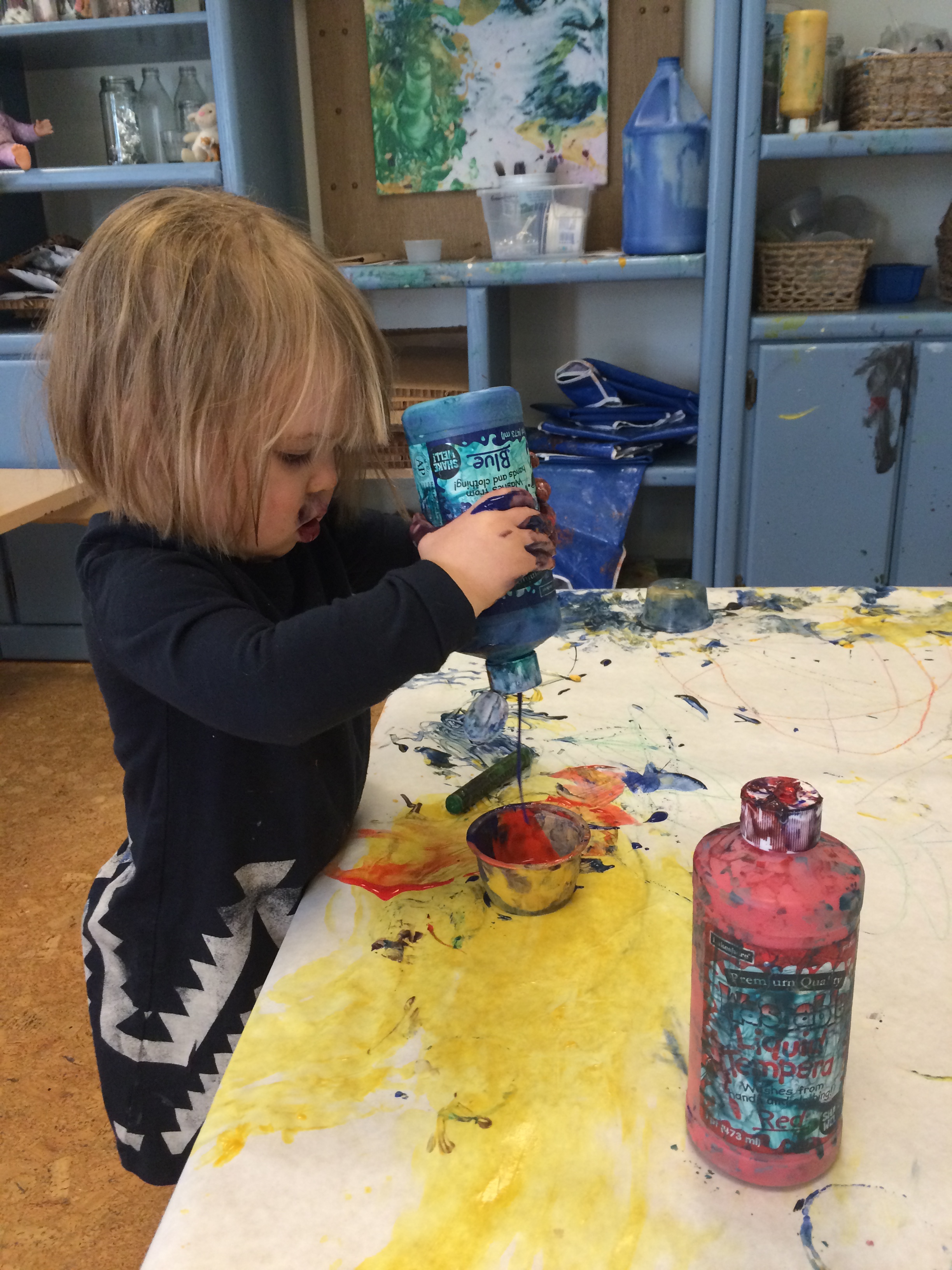
Immediately we switched gears. We asked if they wanted to participate in art. We asked if they wanted to use a paintbrush or something different. We offered additional materials to add to their projects. We gave them the option of sitting in their chair or standing at the table. We ASKED. And then, we respected their choices. The level of enthusiasm skyrocketed. The aforementioned child who had refused art, said yes to art every day. Their sensory experience evolved into focused work.
While we knew that if we allowed them to put every color of paint on their paper they would end up with a mucky brown, we agreed that that wasn’t the point of their work. They needed to know that they could choose. They needed to explore what would happen when purple and green and orange mixed together. It was their work and their choice. Maybe they wanted to make mucky brown. Maybe they were searching for the perfect greenish shade of mucky brown that ends up on the bottom of your shoe after stepping in muddy grass. We will never know. What we did figure out was that we were finally hitting the right note. We were tuned into with their needs and experience. We had learned to embrace the toddler version of “process over product” and didn’t care what it looked like in the end.
Bit by bit the children discovered how to accomplish their individual goals. After spending a few days mixing everything and always ending up with mucky brown, they began to ask for less. They had become more thoughtful about their choices. One day without any prompting, a child looked up at our shelf and asked for a sponge. None of the other children were using sponges and we hadn’t brought them down as an option for a few weeks. But he had studied his work and wanted something different. My heart was so incredibly happy in that moment. He felt safe and free to do his work and knew that we were open to what he wanted to try.
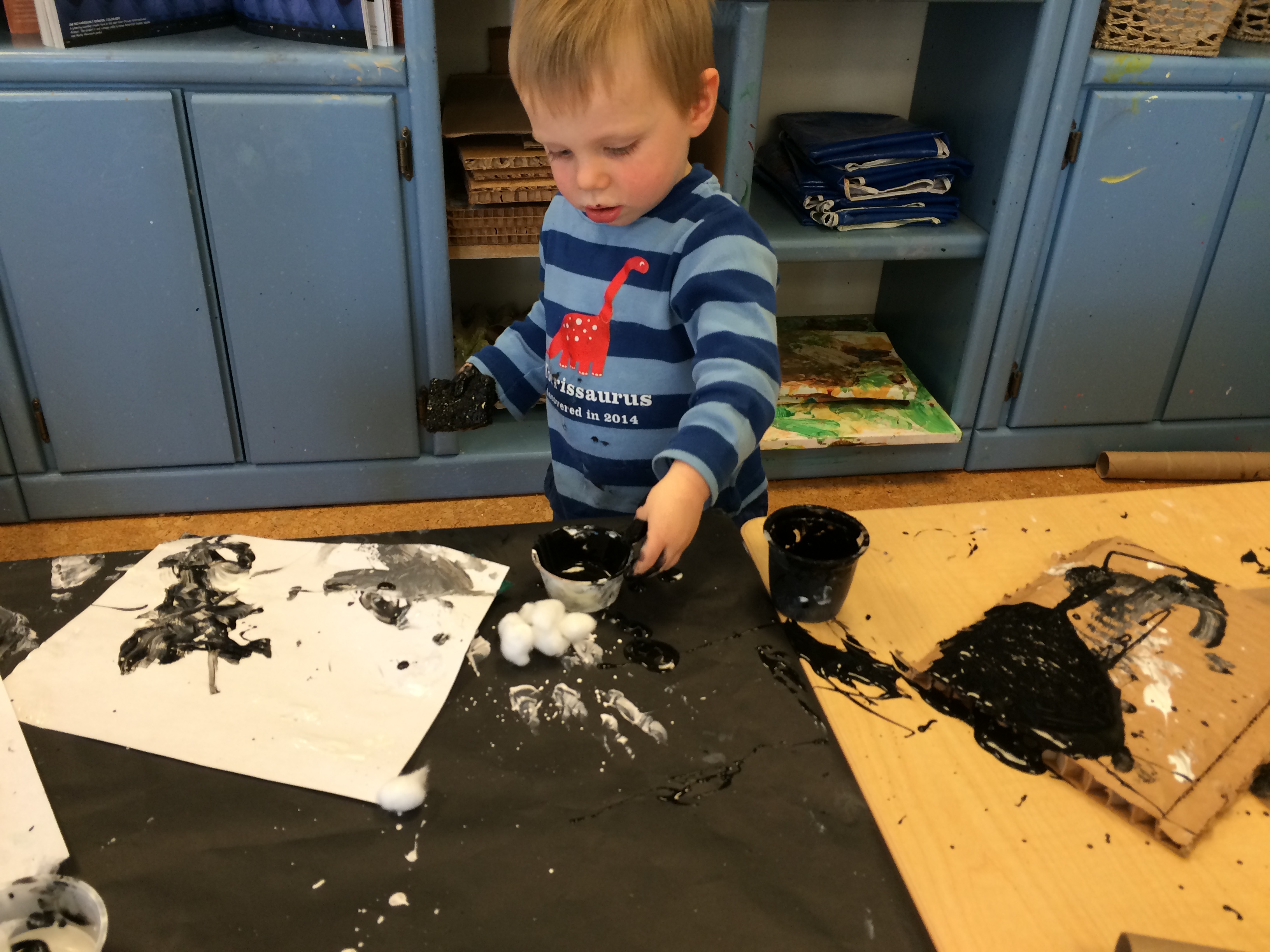
Flash forward to today. Instead of planning an “open-ended project,” my co-teachers and I now plan an open-ended concept. As it turns out, this subtle modification fostered an enormous change. We think about things they are interested in, materials they wanted to explore, and experiences we have had and pull together an idea. As we sit around the snack table we share our idea as a proposal. The children then are invited to give us their input. Do they want to participate? Do they want to work together or individually? Do they want try the materials that we are offering? They make each experience their own. Each week they push US a bit more to try new things. Instead of asking us to put paint in their cup, they are asking us for the bottle so they can do it themselves. Yes, we know how it could possibly end up, but we take a deep breath and say, “OK!”
The work that goes up on our walls now is amazing. It is so much more interesting and beautiful than anything I could’ve planned. The children are proud of their work and look up at it often. They see pictures of themselves working and will relive those moments with us. We remember our process together. We laugh about who had paint in their hair or how long it took the teachers to clean up.
It has been such a journey and I’m glad to say it’s not over yet. Continually learning and growing right along side the children in my classroom is my favorite thing about being a teacher. I’m always wondering about what else I can offer to the children or what they will teach me. Every day we begin our process, I get excited to see what they come up with. I love following their exploration and I love that it is completely their own. I love that it was the children who directed me and taught me how to really listen.
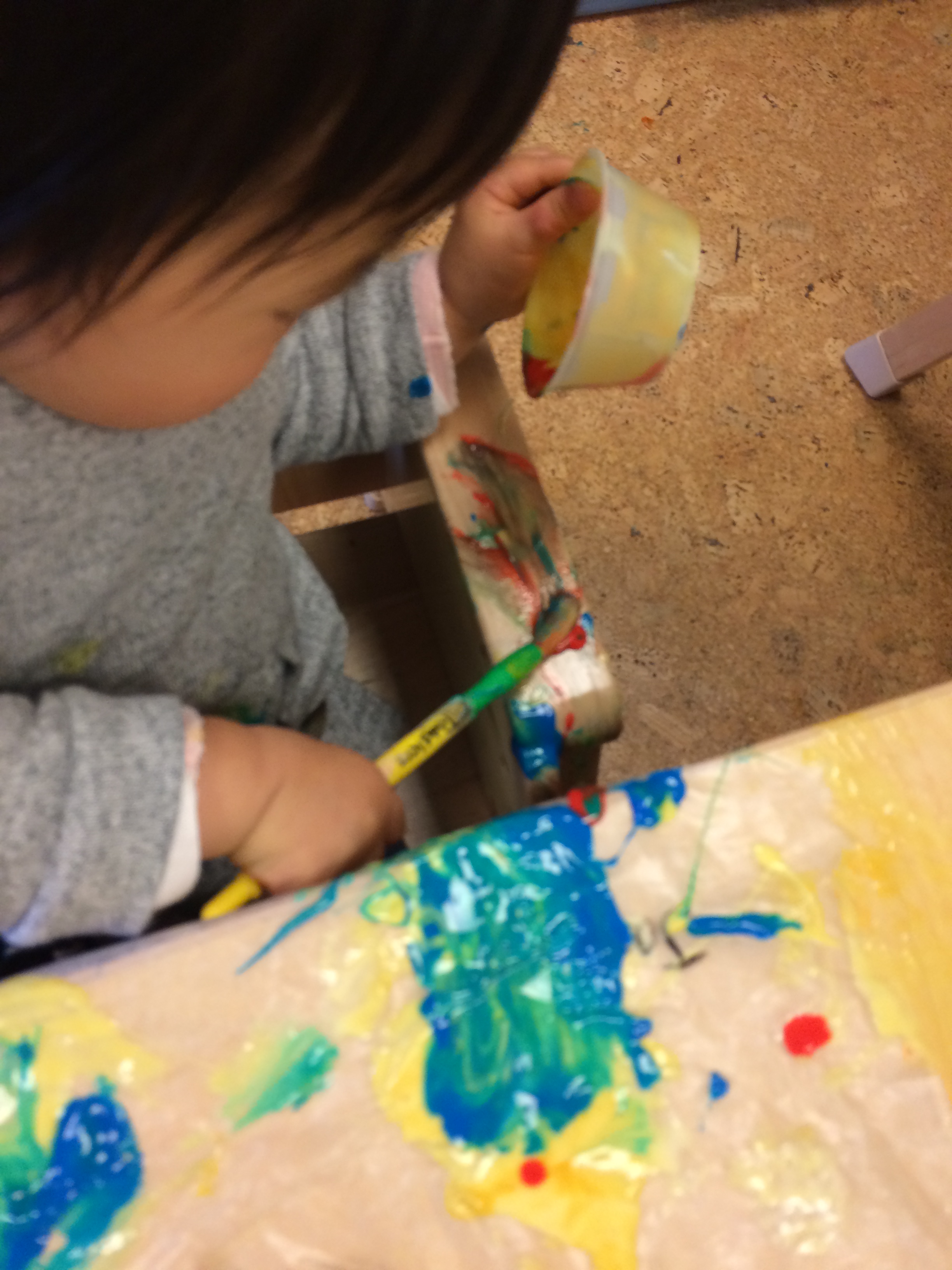
It’s messy. It’s chaos. It’s incredible. We have a new saying in the toddler room: “If you don’t have to mop up after art, you’re not doing it right.” For me, it doesn’t get much better than that.
– Ms. Simone, Toddlers at The Nest

